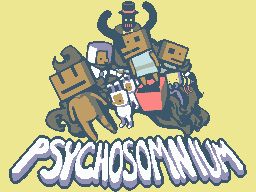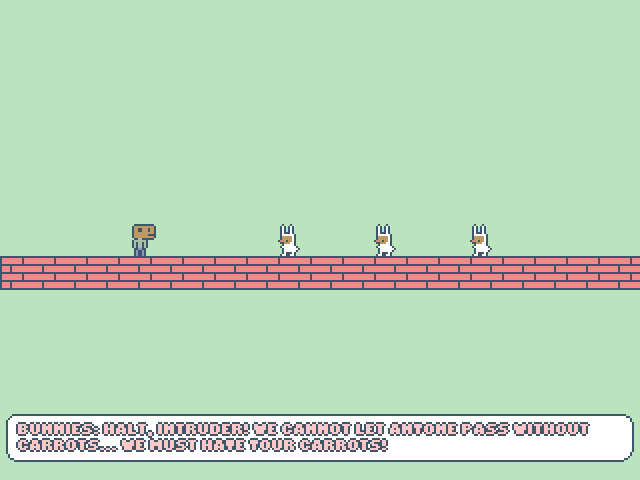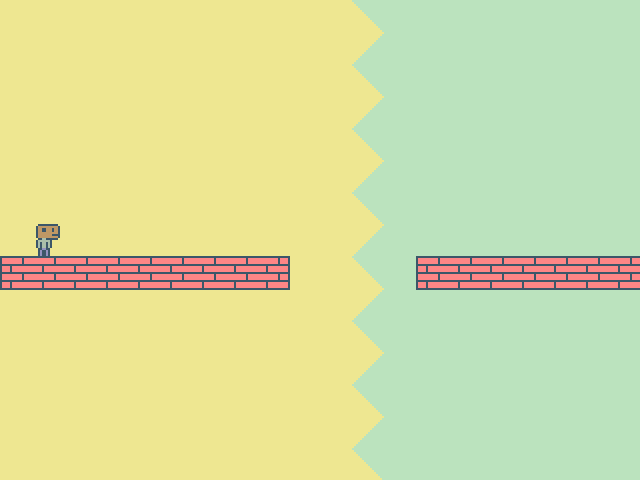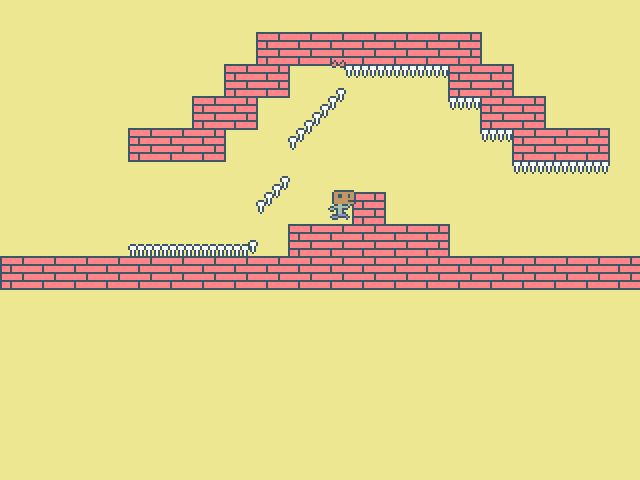Retro Replay Review
Gameplay
Psychosomnium immediately stands out with its unorthodox approach to puzzle design. Rather than adhering to traditional logic, each of the roughly 20 screens challenges players to embrace dreamlike reasoning. You’ll find yourself pushing boundaries—both in the environment and in your own assumptions—as you attempt to progress through impossible scenarios that require lateral thinking over rote memorization.
(HEY YOU!! We hope you enjoy! We try not to run ads. So basically, this is a very expensive hobby running this site. Please consider joining us for updates, forums, and more. Network w/ us to make some cash or friends while retro gaming, and you can win some free retro games for posting. Okay, carry on 👍)
The controls are deceptively simple: arrow keys for movement and the Z key for interactions. This pared-down scheme places the emphasis squarely on experimentation. Even so, the game lulls you into a false sense of security before presenting puzzles that verge on the absurd. Expect to walk through walls, leap into hazards deliberately, or trigger seemingly lethal events just to see what happens next.
Each screen functions like a standalone riddle, yet they tie together thematically through surreal imagery and escalating difficulty. While the overall journey is brief, the time you spend on each challenge can vary dramatically. Beginners might breeze through certain segments but then face head-scratching moments that demand careful observation—or a willingness to try anything.
The satisfaction of discovery in Psychosomnium comes not from mastering a single mechanic but from piecing together the dream logic that underpins every scenario. With only 20 stages, there’s little room for redundant filler. Instead, you’re propelled forward by curiosity, even when the path feels counterintuitive or downright perilous.
Graphics
Visually, Psychosomnium embraces minimalism in service of its surreal themes. Backgrounds and objects are rendered in simple, flat colors that recall classic pixel art, yet the compositions have a modern sheen. The stripped-down look ensures that attention remains on puzzle elements, while still evoking an otherworldly atmosphere.
Each screen is thoughtfully composed to hint at hidden solutions. Shadows stretch in impossible directions, platforms float without support, and color contrasts subtly guide your eye to interactive elements. Though the game never boasts high-resolution textures, its clean lines and strategic use of negative space conjure a dreamscape that feels both familiar and unsettling.
Animations are sparse, yet purposeful. When you activate a mechanism or trigger a trap, motion serves to reinforce the uncanny logic at play. A door might slide open too slow, or an elevator might ascend only after you perform a bizarre action. These moments, though brief, punctuate the puzzles with a sense of dynamic discovery.
Sound and music further enrich the graphical style by providing ambient cues that complement the visuals. A muted hum or distant chime can make a static room feel alive, reminding you that in this world, nothing is quite as it seems. The overall package is less about flashy visuals and more about creating a cohesive, dreamlike environment.
Story
Psychosomnium doesn’t deliver a conventional narrative, but it weaves an implicit story through context and imagery. Rather than dialogue or exposition, the game relies on environmental storytelling: each screen offers cryptic hints about a fragmented dream or a subconscious journey. Your role as the protagonist remains ambiguous—are you an explorer, a victim, or both?
As you progress, certain recurring motifs emerge: fractured mirrors, looping corridors, and enigmatic symbols that hint at an underlying theme of self-exploration. These elements don’t spell out a clear plot, but they create a haunting tapestry that encourages interpretation. Players who enjoy piecing together lore from visual cues will find ample fodder for speculation.
The absence of explicit storytelling can be freeing or frustrating, depending on your preference. If you crave a linear plot with defined characters, Psychosomnium may feel sparse. However, if you appreciate stories that unfold organically through gameplay and environment, the game’s surreal framework offers a uniquely personal experience.
Ultimately, the storyline—such as it is—becomes a mirror for your own reasoning process. Each leap of faith you take, each perilous jump you make, becomes part of an internal narrative about perseverance, curiosity, and the thrill of unraveling the unknown.
Overall Experience
Psychosomnium delivers a compact yet memorable adventure. Its brevity—just 20 screens—belies the challenge contained within. Players should expect to spend considerably more time than they might guess, thanks to puzzles that defy expectation. For those with a penchant for brainteasers and surreal worlds, this game can be a delightful rabbit hole.
The minimalist controls and graphics serve the core design philosophy: focus on the puzzle. There are no extraneous mechanics or lengthy tutorials, allowing you to dive straight into the dream logic. This streamlined approach is refreshing, though it may alienate those who prefer more hand-holding or conventional level progression.
Replay value comes from the desire to test alternative solutions and uncover every hidden nook. Even after completing the main sequence, you may return to experiment with tasks you initially dismissed as impossible. The game’s willingness to break its own rules rewards creative thinking and experimentation.
In the realm of indie puzzle games, Psychosomnium stands out as a bold experiment. It’s not for everyone—its surreal difficulty curve and cryptic puzzles demand patience and a playful mindset. But for adventurers willing to embrace its illogical charm, it offers a unique journey through the subconscious that challengers and dreamers alike are sure to remember.
 Retro Replay Retro Replay gaming reviews, news, emulation, geek stuff and more!
Retro Replay Retro Replay gaming reviews, news, emulation, geek stuff and more!









Reviews
There are no reviews yet.